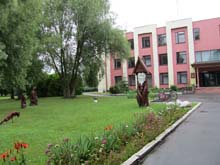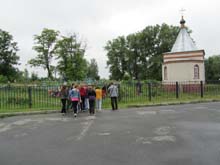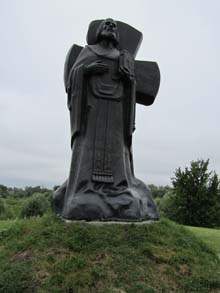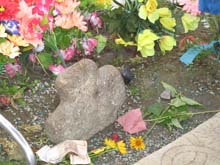Turov
The ancient town of Turov is the heart of Polesie . Scientists believe that the first settlement on the Pripyat river appeared well before the first millennium. The exact date of the founding of Turov is unknown. In written sources the city was first mentioned in "The Tale of Bygone Years" in about 980. According to some historians Turov emerged as an administrative, economic and cultural center of dregovichy.
There are several theories about the origin of the name of the city. Perhaps the name was given by the legendary Prince whose name was Tur and who founded the city. There is also an opinion that the name comes from the mighty wild bull – an aurochs that was once considered to be the king of beasts of Belarusian Polesie and that was exterminated by the XVIII century ...
The city of Turov is situated on the right bank of the Pripyat River and its channel Strumen. It is one of the oldest cities in Kievan Rus. The first mention of it relates to the year 980.
In the 10-13 centuries Turov was the capital of an independent principality and played a major role in the political, economic and cultural life of ancient Rus. It was a wealthy medieval trade and craft city. Turov was constantly involved in internecine wars for the princely and grand-ducal thrones. Turov had well-fortified defensive structures. The city repeatedly stood long sieges of the internal and external enemies. Turov also stood the unprecedented for that time siege which lasted 10 weeks and took place in the middle of the 12th century. The squad of Turov participated in many wars with external enemies.
Medieval Turov was the largest cultural and religious center for eastern Slavs. It was also the center of script and writing of annals. One of the most educated people of the time lived and worked in Turov in the 12th century. He was a poet, a philosopher, an enlightener, theologist and a preacher. It was Bishop Cyril Turovsky. He wrote many catechisms, prayers, including the masterpiece of ancient culture “The Lay of Igor's Warfare”.
Centuries have passed. Turov was constantly destroyed by numerous wars and fires. It repeatedly rose from the ashes. Nowadays Turov is a small town with a unique way of life, with its unique history, life and ethnography.
Tourists are invited to visit the Castle Hill which is located in the utmost south-west of the town. It is a monument of the Middle Ages. There is a modern monument to St. Cyril Turovsky at the top of the Hill. The day of St. Cyril Turovsky is celebrated here every year on the 11th of May. On the Castle Hill on the night of the 6th to the 7th of July people celebrate a traditional pagan holiday Ivan Kupala. These and many other national holidays are accompanied by amateur groups which perform ceremonial and folk songs and dances. You can see Boris and Gleb cemetry in the north-west of the Castle Hill. In the middle of the 12th century there was Episcopal Boris and Gleb Monastery. Cyril Turovsky lived in one of the towers of the Monastery.
From the ancient settlement the road goes to the east and leads to the center of modern Turov. There are levee and city parks in Turov. In the parks you can find monuments to the soldiers who liberated Turov and to residents who died during the Second World War. In the center, on the bank of the Strumen river there is a memorial symbol dedicated to the thousandth anniversary of Turov.
At 500 m to the south of the memorial symbol there is a local history museum. You can get aquainted with the history and culture of Turov there.
Then the route goes across the center of Turov to the east where you will see the only extant religious building. It is the Orthodox Church of All Saints. Once there were about 40 building of religious worship.
Cyril Turovsky.
The literary heritage of Cyril Turovsky includes prayers, confessions, parables, sermons, stories, legends and dozens of musical and poetic works. This heritage is included into Russian, Belarusian and Ukrainian cultures. The preacher was an advisor and a mentor to many outstanding people of his time. The works of Cyril Turovsky were included in the most well-known manuscripts, such as “Torzhestvennik” and “Chrysostom”. These are outstanding anthologies of the best patterns of oratory. The works of St. John Chrysostom were the basis of these anthologies.
Boris and Gleb cemetery is situated on the bank of the Yazdy river, on a small hill, surrounded by marshes. It is just a few hundred meters from Turov.There is a legend that killed sons of the Kievan prince Vladimir were buried on this island in 1015. Their names were Boris Rostovsky and Gleb Muromsky. Their contemporaries accused their stepbrother Svjatopolk Vladimirovich in their death. He was the first Prince of Turov who was recorded in the annals. Theauthoroftheannalscalled Svjatopolk
“Cursed”.
Magic Cross
In the old part of the cemetery in the last years of the XX century a stone cross began to appear out of the ground. The cross has an erose surface and gentle ends. The residents of Turov believe that this cross radiates warmth and ... "grows"! The cross grew a few inches in the last few years.








